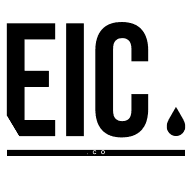How Do You Balance Creative Freedom With a Publication's Style Guide?
In the meticulous world of editing, balancing the spark of creativity with the structure of a style guide is an art in itself, as described by a Co-Founder who emphasizes anchoring content with core brand elements. Alongside industry professionals, we've gathered additional answers that delve into this delicate equilibrium. From the steadfast strategies of an Editor in Chief retaining final edit in submission policy to the broader perspective of treating the style guide as a creative canvas, explore the diverse approaches that shape editorial excellence.
- Anchor Content with Core Brand Elements
- Retain Final Edit in Submission Policy
- Align Creativity with Reader Expectations
- Collaborate Closely with Editors
- Innovate Within Style Guide Parameters
- Enhance Clarity with Creative Elements
- Treat Style Guide as Creative Canvas
Anchor Content with Core Brand Elements
We maintain a strong balance between creativity and adherence to our style guide by anchoring our content with core brand elements while experimenting with new trends to keep it lively. This strategy allows us to be both consistent and surprising, enhancing brand recognition and effectively engaging our audience.
By allowing for flexibility within our framework, we ensure that each piece of content, while unique, still feels part of the same family.

Retain Final Edit in Submission Policy
Include the ability to retain final edit without prior review for all external submissions in the public submission policy, and make changes accordingly. That way, you retain creative control and brand management with one addendum to a broader policy.

Align Creativity with Reader Expectations
One of the main purposes of a style guide is to not jar the reader. If an article is factual and prosaic, the reader deserves to get what they expected. That's why our news outlet follows the AP Stylebook. Creativity is no excuse for being annoying. If a reporter is writing more creatively, that allows for more freedom. If it's a first-person article, let's see that personality come out. That freedom also aligns with another purpose of a style guide: to set content guidelines. If the readers can see that a real person wrote about real experiences, they will tolerate a more opinionated or unusual style.

Collaborate Closely with Editors
Balancing creative freedom with a publication's style guide can be achieved through close collaboration with editors. This partnership allows an individual to present unique ideas and receive feedback on aligning them with the publication's framework. By engaging in regular discussions and critiques, one's creativity can be honed to fit seamlessly within the prescribed boundaries.
It’s about marrying innovation with conformity to create content that is both fresh and appropriate. Keeping the dialogue open with editorial staff can guide you towards crafting compelling narratives that still honor the house style. Initiate conversations with your editors to fine-tune your creative concepts.
Innovate Within Style Guide Parameters
To craft content that adheres to a publication's guidelines while still injecting a touch of innovation requires a delicate balance. One can start by understanding the core principles behind the style guide, which acts as the groundwork for all content. From this understanding, subtle innovation can be introduced, enhancing the material without overshadowing the established guidelines.
It's about recognizing the parameters in which you can express creativity and push boundaries in a way that is both tasteful and respectful to the publication's brand. An effective approach is to innovate within the interstices of the guidelines. Feel encouraged to subtly infuse innovation into your work, while respecting the established guide.
Enhance Clarity with Creative Elements
Prioritizing reader clarity is paramount when balancing creative freedom with a publication's style guide. It is crucial to remember that the style guide serves as a roadmap to ensure that content is accessible and enjoyable to the intended audience. Once clarity is achieved, weaving creative elements into the text can enhance the reader's experience without compromising understanding.
This approach allows for a tasteful blend of innovation and conformity that honors both the reader’s needs and the publication's vision. Strive to enrich the readers’ experience with creativity that complements clear and coherent content.
Treat Style Guide as Creative Canvas
A publication's style guide can be seen as a canvas rather than a cage. By understanding it as a foundation upon which one can build, it guides without constraining the flow of creativity. This perspective allows for a harmonious blending of originality with the established norms of a publication.
By treating the guide as a backbone for consistency, it frees the creator to explore ideas that are compelling and unique while still under the umbrella of the publication’s standards. Embrace the guide as a canvas for your creativity, and allow your imagination to color within its nuanced outlines.

